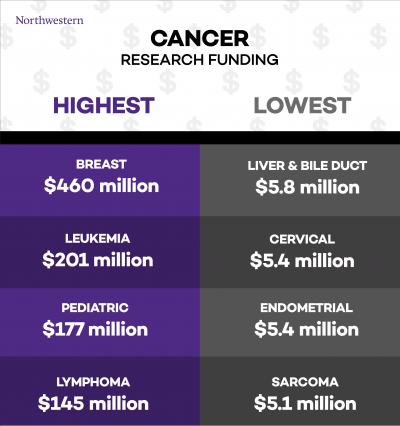Why? In the case of lung cancer, it may be because over half of lung cancers are caused by smoking and even more are statistically linked to smokers (second-hand smoke) but it still carries a stigma. Liver cancer may be associated with alcoholics. Both of those are lifestyle diseases and not genetic bad luck.
The authors of a new analysis focus on cancer-related nonprofit organizations and they do play an important role in funding medical research, but they are more involved in funding education of patients and their families and influencing health policy. It's still government that will fund half the basic research that may lead to applied science that the private sector will develop. Underfunding of these common cancers could negatively impact research, drug development and the number of FDA drug approvals for poorly funded cancers.

A comparison of the four highest- and lowest-funded types of cancers. Credit: Northwestern University
The nationwide study, conducted between October 2017 and February 2018, used IRS tax records to identify all nonprofit organizations that support any type of cancer and made at least $5 million in annual revenue in 2015. The scientists examined 119 organizations with a total of $5.98 billion in annual revenue. Most of this ($4.59 billion) went to general cancer charities with no focus on one disease (e.g. American Cancer Society).
The authors compared the amount of revenue for each cancer type with the number of new cases, number of deaths and number of years of life lost to see if the amount of funding for each cancer is proportional to how common and/or deadly it is.






Comments